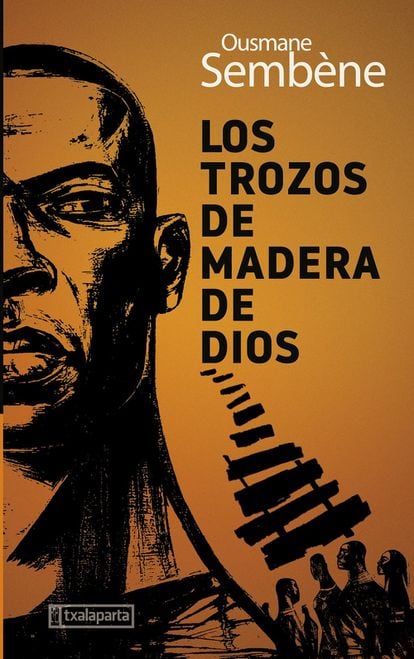Note to readers: EL PAÍS offers openly all the content of the Future Planet section for its daily and global contribution to the 2030 Agenda. If you want to support our journalism,
subscribe here.
We are used to great heroes, luminous saviors who light the way.
However, the best conquests go hand in hand with crowds who stand up to injustice together.
They are the collective, revolutionary struggles that have managed to reverse situations, after paying a very high price, but that speak to us of the greatness and courage of human beings and of what we are capable of achieving when we unite.
One of these struggles is the one embodied in
The Pieces of God Wood
by Ousmane Sembène, written in the 1960s.
More information
Africa's 2020 and its books
"What art and literature cause is that people start to think and question some things"
Sembene, the 'griot' who was a stevedore in Marseille
The Senegalese is perhaps the most universally known African film director.
Not surprisingly, he was the architect of the first film made on African soil.
But before telling stories through the camera, he was a great writer, with a career recognized by both the public and critics, and the author of the aforementioned work, considered a masterpiece of the twentieth century.
And now, a classic.
There are not many translations that bring us closer to the social struggles carried out on the African continent, showing “Africa standing up”.
Luckily,
God's pieces of wood
(Txalaparta), whose only translation so far is the one made more than 40 years ago by the Cuban writer Virgilio Piñera, and which remained out of print, has just been reissued.
The cover of the book 'The pieces of wood of God'. Txalaparta
Now we can read an essential title that is inspired by a historical event and reflects a collective struggle full of dignity and a goodbye to the time when, by dividing them, they managed to decimate them.
Over the course of five tough months, from October 10, 1947 to March 19, 1948, the railway workers on the Dakar-Niger line went on strike for a better life.
They wanted equal rights, conditions and the same salary as whites who did the same job.
We are in colonial times, the repressive French administration did not hesitate to show its absolute contempt for the black workers of the line.
They were treated like beasts.
And the environment in which they live and the extreme hardship they are experiencing is joined by hunger, deaths and violence, in all its forms, exercised without control.
The narrative, which has been compared to Emile Zola's social novel, pierces into the common mask, one that blurs people and makes them invisible, to rescue a handful of characters. In this way, the writer achieves a picture populated by multiple voices that resonate in unison, although they are separated by different social, generational, religious or cultural realities. Sembène, born of the same origins as many of them, once a union leader and always a committed man, knew how to capture the strength of their convictions, the weaknesses that gripped them and the combative spirit that, like a true human tide, they kept high, clear as the water, despite the fierce machinery in front of them.
Sembène knew how to capture the strength of their convictions, the weaknesses that gripped them and the combative spirit that they held high despite the fierce machinery in front of them.
This is how he composes his fresco full of nuances. From those who support tradition and watch their world disappear, to traitors who put their interests first, to those who keep the flame alive, to lovers who live in a polygamous society or those who have penetrated colonial structures through education and they do not feel good, neither among their own nor among Europeans. But above all, women shine, women who have not had easy lives, women who cling to their children, women who do not hesitate to stand up, who sing. They sing as they go. "And men understood that at that time, if it originated other men, it also originated other women," the novel reads. Achieving changes, in addition, without anger and without rancor.
And men understood that at that time, if it originated other men, it also originated other women ”, the novel reads
Sembène,
who affirmed that “all culture is political”, wanted to take history to the cinema. It was precisely during the same years in which he wrote the work that he began to be interested in cinema, a medium that allowed him to reach more people than reading in his country. It did not succeed. But, when the pages of the book are turned, the writing takes shape and is outlined in images, then the scenes are embedded in the pupils as if we were watching a movie. We know that neither injustice nor racism are things of the past and, therefore, all that colossal force when sharing the harshness of the unequal struggle maintained by those exploited beings and deprived of all rights, penetrates inside each reader, excited and dazzled at at the same time, before an Africa that gets up and walks.
FUTURE PLANET can follow on
,
and
, and subscribe
here
to our 'newsletter'
.

